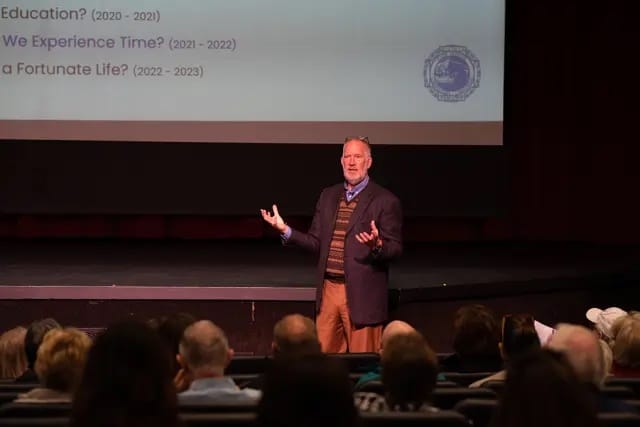Head of School’s Notebook: What is History?
February 3, 2023
February 1st marks the beginning of Black History month, the origins of which date back to 1915 and historian Carter Woodson. It was a week at first – so designated by Woodson’s Association for the Study of Negro Life and History – and scheduled in mid-February to coincide with the birthdates of Frederick Douglass and Abraham Lincoln. Acknowledged for most of the 20th century only sporadically, Black History Month gained national traction in 1969 as a result of protests at Kent State University and the demands of young people that “history” be told in its entirety.
Gerald Ford, in 1976, became the first President of the United States to endorse Black History Month to “honor the too-often neglected accomplishments of Black Americans in every area of endeavor throughout our history.” Portions of our efforts to do just that took place on Wednesday at Cate in a long assembly led by students and faculty, complete with poignant moments, thoughtful presentations, an energetic name-that-tune competition, even a short period of community-wide meditation. The theme for the month is “rest is resistance” so the moments of contemplation were as welcome as they were thematically appropriate.
It was a good opening to what will surely be a month of insight and understanding, discourse and dialogue, celebration, and community building. History is a great teacher. From it we all take lessons of one sort or another. Our own histories shape each of us. Our collective histories do as well. I imagine Carter Woodson thought the same, which is probably why he sought to bring attention to stories that might not otherwise be told or known.
 Just last week, during Grandparent’s Day, I was digging into one of those stories that might not have otherwise been told. It’s a document that John Hay, one of Abraham Lincoln’s secretaries, discovered after the President’s death. It has since been called the “Meditation on the Divine Will.” Lincoln wrote it after the Battle of Antietam as a way – it seems – to understand his own culpability for the horrendous impacts of the war. It is a private meditation – not for public eyes – of a man in pain.
Just last week, during Grandparent’s Day, I was digging into one of those stories that might not have otherwise been told. It’s a document that John Hay, one of Abraham Lincoln’s secretaries, discovered after the President’s death. It has since been called the “Meditation on the Divine Will.” Lincoln wrote it after the Battle of Antietam as a way – it seems – to understand his own culpability for the horrendous impacts of the war. It is a private meditation – not for public eyes – of a man in pain.
It is also history of the most powerful kind: personal, revealing, and telling. But we only know of Lincoln’s Meditation because John Hay found the document and introduced it into the historical record. We don’t tend to think of history or our understanding of it as a byproduct of serendipity, but in some cases it is. Which means our lack of understanding can at times be similarly arbitrary.
I wonder what is lost as a result. What if histories of a certain sort are never discovered or told or admitted to the historical record? Those same questions must have motivated Carter Woodson and those students at Kent State. They are no less germane today.
We are ultimately as nations and civilizations and communities the same as we are as individuals: the byproducts of who we were, who we have become, and who we aspire to be. Black History Month was conceived, it seems, to broaden the definition of “we,” so that the history and context that is recorded is not a generalized tale but nuanced renderings of varied and distinctive experiences, each unique, each valuable, each a minuscule part of a truly expansive narrative.
We will likely never know the whole story. But we should seek as many records as possible. For the effort to know the past and apply its lessons to the present and the future is not simply how we or our children or our students study history. It’s how we and they make history.